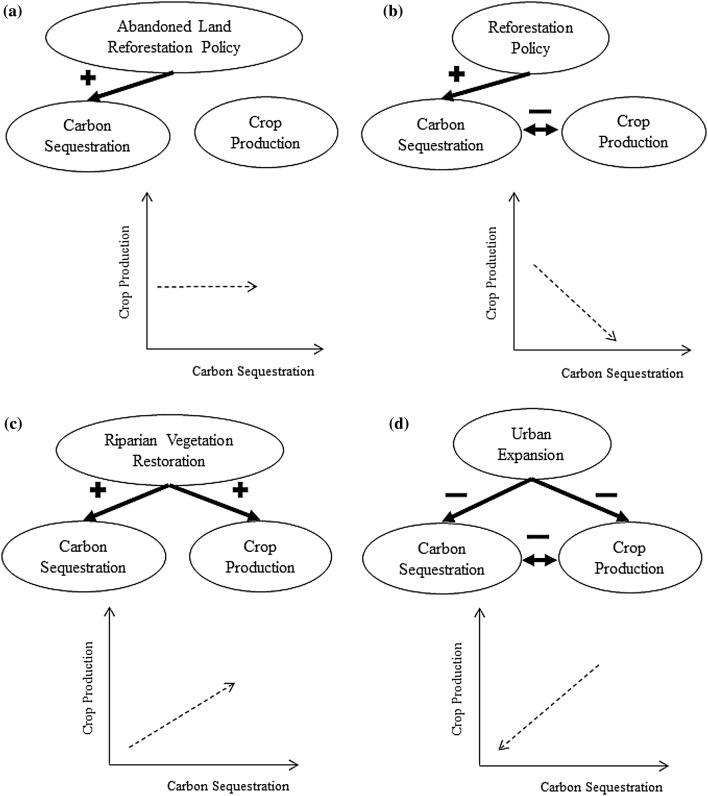Fig. 1.
Schematic demonstrating how the mechanistic pathways in which drivers affect ecosystem services can affect the relationships between ecosystem services. In a, the reforestation of abandoned agricultural land (the driver) increases forested area, and consequently carbon sequestration. However, since this land is no longer used for crop production, this reforestation has no effect on food production. Therefore, there is no trade-off or synergy between the two ecosystem services. In b, a restoration policy (the driver) positively affects the forested area. However, because cropland and forest compete for land, forest area increases at the expense of cropland. This leads to a trade-off between the two ecosystem services. In c, management actions to restore degraded riparian vegetation will increase carbon sequestration due to increased tree cover, and increase crop production as it increases soil fertility, creating a synergy. As riparian zones are often unsuitable for agriculture, there is no competition between the two ecosystem services under this management action. In d, urban expansion (the driver) negatively affects the area available for both cropland and forest. Cropland and forest also negatively interact with one another as they compete for land. However, since the driver simultaneously decreases the area available for cropland and forests, this leads to a negative synergy between carbon sequestration and food production
Adapted from Bennett et al. (2009)

